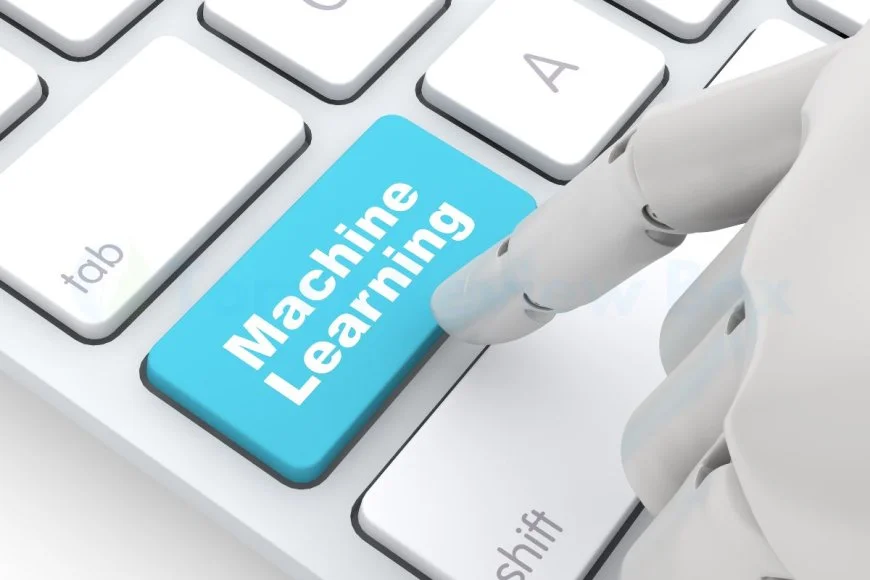What is a Classifier in Machine Learning: Understanding Core Algorithms
Discover the essence of classifiers in machine learning. Learn about core algorithms and their applications. Gain a comprehensive understanding today.

Did you know that over 70% of all data is unstructured? Understanding what a text classifier in machine learning is can help make sense of this vast amount of information. In simple terms, a classifier is a model that sorts data into categories based on specific features.
Machine learning classifiers play a crucial role in various applications, from spam detection in emails to image recognition systems. By utilizing algorithms and training data, classifiers can accurately predict outcomes and make informed decisions using a supervised learning approach and models. Dive deeper into the world of machine learning classifiers, models, and AI to unlock their full potential.
Key Takeaways
-
Understand Classifiers: Classifiers in machine learning are algorithms that categorize data into different classes based on patterns and features.
-
Explore Core Algorithms: Core classification algorithms like Decision Trees, Naive Bayes, K-Nearest Neighbors, SVM, and Neural Networks, which are text classifiers and models, form the foundation of machine learning classification.
-
Implement Advanced Techniques: Advanced classification techniques enhance model accuracy and performance by utilizing complex algorithms and methodologies.
-
Grasp How Classifiers Work: Understanding the inner workings of classifiers helps in selecting the most suitable algorithm for specific datasets and problem domains.
-
Gain Insights from Decision Trees: Decision Trees provide a visual representation of decision-making processes, making it easier to interpret and explain the model's predictions.
-
Utilize Naive Bayes for Probabilistic Classification: Naive Bayes is a simple yet powerful algorithm based on Bayes' theorem, widely used for text classification and recommendation systems.
Understanding Classifiers
Definition
A classifier in machine learning is an algorithm that sorts data into different classes, automating text classification tasks. This automation saves time for businesses by efficiently organizing large datasets. There are various types of classifiers, each tailored to the specific characteristics of the datasets they analyze.
Importance
Classifiers are crucial in automating manual tasks, enhancing efficiency in data processing by text classification. Both supervised and unsupervised classifiers are fundamental in machine learning, with supervised classifiers relying on labeled training data for accurate predictions. An essential example of supervised machine learning is sentiment analysis, which determines sentiments expressed in text data.
Classifier vs Model
Distinguishing between a classifier and a classification model, a classifier is a component within the model that assigns labels to input data based on patterns learned during training. The model is trained using the classifier for text classification to effectively categorize new data points. The relationship between the algorithm and the end result in machine learning lies in how well the classifier can accurately classify unseen data.
Core Classification Algorithms
Overview
Classifiers in machine learning are algorithms that categorize data into different classes or groups. These algorithms play a crucial role in various applications, including analyzing customer comments using text classification. There are several types of classification algorithms, each with its unique approach to classifying data.
Decision Trees
Decision tree algorithm categorizes data by following a series of if-then rules, creating a hierarchical structure for classification. This method is beneficial for visualizing and interpreting data, making it easier to understand the decision-making process within the model.
Naive Bayes
Naive Bayes classifiers belong to a family of probabilistic algorithms that categorize data points into predefined categories based on their probabilities. These classifiers are known for their simplicity and efficiency in tasks like text classification, where they excel due to their probabilistic nature.
K-Nearest Neighbors
K-Nearest Neighbors (KNN) algorithm operates on a pattern recognition approach, identifying the closest related data points in an n-dimensional space. The strength of KNN lies in its flexibility and simplicity, making it ideal for various classification tasks where the proximity of data points matters.
Advanced Classification Techniques
Support Vector Machines
Support Vector Machines are algorithms used for multidimensional classification, excelling in classifying data with super finite degrees of polarity. They are widely applied in fields like image recognition and bioinformatics.
-
SVMs efficiently handle high-dimensional data by finding the optimal hyperplane that separates different classes.
-
The algorithm works by maximizing the margin between classes, enhancing its generalization capability.
-
SVMs can classify both linearly separable and non-linearly separable datasets using kernel tricks.
Artificial Neural Networks
Artificial Neural Networks replicate the problem-solving processes of the human brain, requiring vast amounts of training data to function effectively. Their complexity allows them to tackle intricate tasks with ease.
-
ANNs consist of interconnected nodes organized in layers that process information similarly to neurons in the brain.
-
Training an ANN involves adjusting weights through backpropagation to minimize prediction errors.
-
These networks excel in tasks like image and speech recognition due to their ability to learn complex patterns.
How Classifiers Work
Algorithm Function
Classifiers function by analyzing input data and assigning them to predefined classes or labels. They utilize mathematical algorithms to make predictions based on the features of the data. Training data is crucial for classifiers as it helps them learn patterns and relationships within the data, enhancing their accuracy in making predictions.
When it comes to classification algorithms, they work by dividing the feature space into regions and creating decision boundaries to separate different classes. By examining the characteristics of each class, these algorithms can classify new, unseen instances accurately. The process involves learning from labeled training data to build a model that can generalize well to classify future observations effectively.
Training data plays a pivotal role in improving algorithm performance as it allows the classifier to learn from examples and adjust its parameters accordingly. The more diverse and representative the training dataset is, the better equipped the classifier will be at categorizing new instances accurately. Therefore, ensuring high-quality training data is essential for achieving optimal classifier performance.
Data Categorization
The process of categorizing data using classification algorithms involves assigning labels or classes to input instances based on their features. Classifiers examine various attributes of the data points and map them to specific categories, enabling them to make informed decisions about how to classify new observations accurately.
Feature selection is a critical aspect of enhancing data categorization accuracy as it involves choosing relevant attributes that contribute most significantly to distinguishing between different classes. By selecting informative features and removing irrelevant ones, classifiers can focus on essential information for making accurate predictions, leading to improved performance in categorizing new data points.
Decision Tree Insights
Structure
Classification algorithms have an internal structure that guides the process of data categorization. They consist of decision nodes, where data attributes are evaluated, and leaf nodes, which represent the class label. This hierarchical arrangement enables the algorithm to make decisions based on specific features.
Classifiers organize data into distinct categories by following a tree-like structure. At each decision node, the algorithm selects the best attribute to split the data, aiming to maximize information gain or minimize impurity. As the data traverses through the tree, it gets classified into different classes until reaching a leaf node.
The importance of algorithm structure lies in its impact on efficient data classification. A well-structured classifier can accurately classify new, unseen data instances by generalizing patterns learned from the training set. The effectiveness of classification heavily relies on how effectively the algorithm organizes and utilizes data features.
Application
Machine learning classifiers play a crucial role in text analysis tasks such as sentiment analysis and topic classification. In sentiment analysis, classifiers are trained to identify emotions expressed in text, helping businesses gauge customer feedback or public opinion. Topic classification involves categorizing text documents into predefined topics or themes for better organization and retrieval.
One notable application of classifiers is their integration into Software as a Service (SaaS) platforms like MonkeyLearn, which offer automated text analysis solutions. These platforms leverage machine learning algorithms to streamline processes like sentiment analysis, entity recognition, and content categorization. By utilizing pre-trained models or customizing their own classifiers, users can automate complex text analysis tasks with ease.
Exploring Naive Bayes
Probability Basics
Probability theory plays a crucial role in machine learning classifiers, specifically in algorithms like Naive Bayes. It involves calculating the likelihood of an event occurring based on available data. These probabilities are then used to assign data points to different classes, aiding in decision-making processes within classifiers. By analyzing the probability of each class, Naive Bayes can predict the most likely outcome for new data points.
When it comes to classification algorithms, understanding basic probability concepts is essential. Probabilities help classifiers make informed decisions by assigning data points to specific categories based on the likelihood of belonging to each class. This process enables machines to learn from past data and make accurate predictions about unseen instances.
In the realm of machine learning, probability serves as a guiding principle for classifiers like Naive Bayes. By leveraging probabilities, these algorithms can classify data points with a certain level of confidence, enabling them to automate tasks and enhance decision-making processes effectively.
Use Cases
Machine learning classifiers, including Naive Bayes, find applications across various industries such as marketing, healthcare, and finance. In marketing, classifiers analyze customer behavior patterns to personalize marketing campaigns and target specific audiences effectively. Healthcare utilizes classifiers for disease diagnosis and treatment recommendations based on patient data analysis.
Moreover, in finance, machine learning classifiers assist in fraud detection by identifying unusual patterns in financial transactions and flagging potential fraudulent activities. The automation capabilities of classifiers streamline repetitive tasks in these sectors while significantly improving decision-making accuracy.
K-Nearest Neighbors Explained
Algorithm Concept
Classification algorithms like K-Nearest Neighbors work by categorizing data points based on their similarity to other data points. Through iterative training, these algorithms learn patterns from labeled training data to classify new, unseen data points. This iterative process involves adjusting the algorithm's parameters to improve accuracy.
In the context of K-Nearest Neighbors, the algorithm predicts the classification of a data point by considering the classifications of its nearest neighbors. By calculating distances between data points in a multidimensional space, the algorithm determines which class a new data point belongs to based on the majority class of its k-nearest neighbors. This simple yet effective approach makes K-Nearest Neighbors a popular choice for classification tasks.
Practical Applications
Classification algorithms find extensive use across various industries for diverse applications. In image recognition, classifiers like K-Nearest Neighbors are employed to categorize images into different classes or labels, facilitating tasks such as facial recognition and object detection. Moreover, in fraud detection, these algorithms analyze transactional data to identify suspicious patterns and flag potentially fraudulent activities.
Moreover, classifiers play a crucial role in customer segmentation strategies for businesses. By classifying customers based on their behavior or preferences, companies can tailor marketing campaigns and personalized recommendations effectively. The scalability and efficiency of classifiers make them ideal for handling large datasets commonly encountered in real-world applications. Their ability to process vast amounts of data swiftly and accurately enhances decision-making processes across industries.
SVM in Depth
Core Principles
Support Vector Machines (SVM) rely on maximizing the margin between classes for effective classification. Optimal hyperplanes separate data points into distinct categories, enhancing model accuracy. Data preprocessing, including standardization and normalization, is crucial for SVM performance by ensuring uniformity in feature scales. Feature engineering involves selecting relevant features to improve classifier efficiency. Model evaluation techniques like cross-validation and confusion matrices help assess classifier accuracy, guiding model refinement.
Field Applications
Machine learning classifiers, including SVMs, find extensive use in various fields. In natural language processing, classifiers analyze text data for sentiment analysis and spam detection. Recommendation systems leverage classifiers to predict user preferences accurately, enhancing user experience. Predictive analytics utilizes classifiers for forecasting trends and identifying patterns in large datasets. The versatility of classifiers extends to diverse domains such as healthcare, finance, and e-commerce, showcasing their adaptability in solving complex problems.
Neural Networks in ML
Understanding ANNs
Artificial Neural Networks (ANNs) are a key component of machine learning, mimicking the human brain's structure to process complex data. These networks consist of interconnected layers, each containing numerous nodes that perform calculations.
The architecture of ANNs comprises an input layer where data is fed, hidden layers for processing information, and an output layer that produces the final results. The layers work together through weighted connections to make predictions or classifications based on the input data.
Training ANNs involves adjusting the weights of connections between nodes to minimize errors in predictions. Backpropagation is a critical technique used to update these weights by propagating errors backward through the network, enabling it to learn and improve its accuracy over time.
Real-World Uses
Machine learning classifiers find extensive applications in various real-world scenarios, enhancing efficiency and decision-making processes. In self-driving cars, classifiers analyze sensor data to detect objects like pedestrians and other vehicles, enabling autonomous navigation and collision avoidance.
Email spam filters utilize classifiers to differentiate between legitimate emails and spam, ensuring inbox cleanliness and security for users. Moreover, in medical diagnosis, classifiers assist healthcare professionals by analyzing patient data to predict diseases or recommend treatment options based on symptoms.
Continuous advancements in classifier technology lead to improved efficiency and accuracy across different industries. Innovations in deep learning algorithms enhance the capabilities of classifiers, enabling more precise predictions and faster decision-making processes in complex environments.
Closing Thoughts
Understanding the various classification algorithms in machine learning equips you with powerful tools to analyze and interpret data efficiently. From Decision Trees to Neural Networks, each method offers unique insights into pattern recognition and predictive modeling. By grasping how classifiers function and their distinct advantages, you can make informed decisions when implementing these techniques in your projects.
Now, it's time to put your knowledge into practice. Experiment with different classifiers, explore real-world datasets, and challenge yourself to build accurate predictive models. Embrace the continuous learning journey in machine learning, stay updated on advancements in the field, and never hesitate to seek new challenges that push your skills further. Start applying what you've learned today and witness the transformative impact of classification algorithms in shaping intelligent systems.
Frequently Asked Questions
What are classifiers in machine learning?
Classifiers in machine learning are algorithms that categorize data points into classes or categories based on their features. They are used to make predictions or decisions about new data based on patterns learned from training data.
How do classifiers work in machine learning?
Classifiers work by learning patterns and relationships from labeled training data to predict the class labels of new, unseen data. They use various techniques such as decision trees, support vector machines, neural networks, and more to classify data accurately.
What are core classification algorithms in machine learning?
Core classification algorithms in machine learning include popular methods like Decision Trees, Naive Bayes, K-Nearest Neighbors (KNN), Support Vector Machines (SVM), and Neural Networks. These algorithms form the foundation for building predictive models and making classifications.
What are advanced classification techniques used in machine learning?
Advanced classification techniques in machine learning go beyond traditional algorithms and include ensemble methods like Random Forests, Gradient Boosting, deep learning with Convolutional Neural Networks (CNNs) and Recurrent Neural Networks (RNNs), as well as dimensionality reduction techniques like PCA.
Why is understanding classifiers important in machine learning?
Understanding classifiers is crucial in machine learning as they enable accurate predictions, pattern recognition, and decision-making based on data. Proficiency with classifiers allows for the development of robust models that can solve complex classification tasks effectively.
What's Your Reaction?







































![MacBook Pro M5: All the features and specs you need to know [LEAKS REVEALED]](https://tomsreviewbox.com/uploads/images/202502/image_430x256_67bd6d7cd7562.jpg)



























